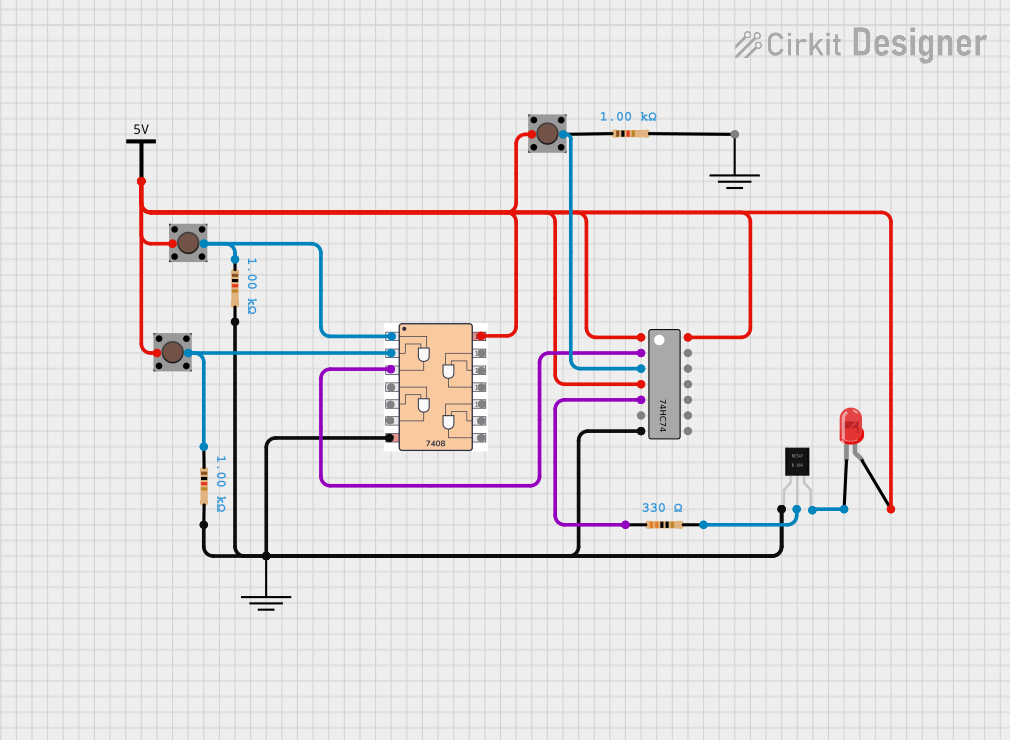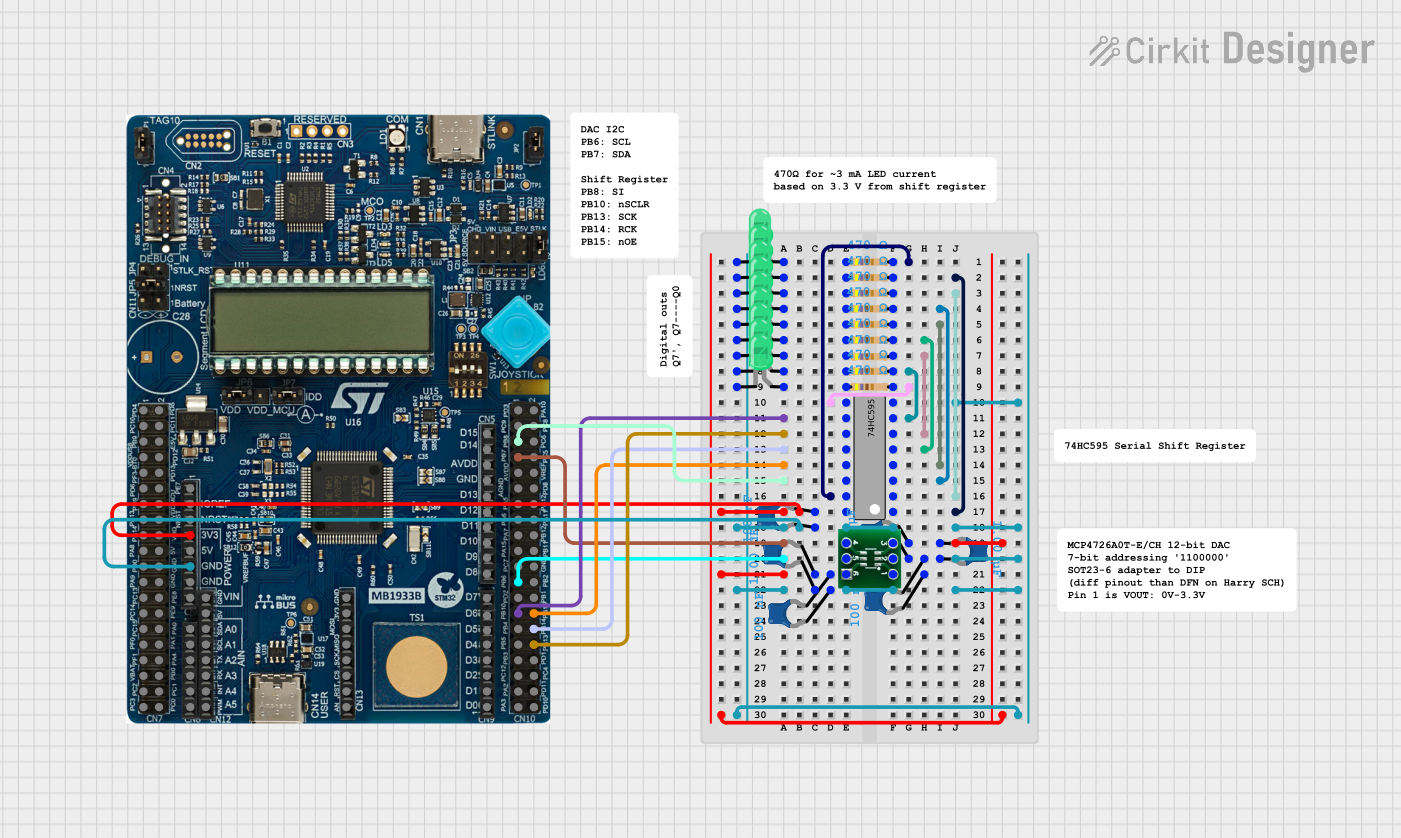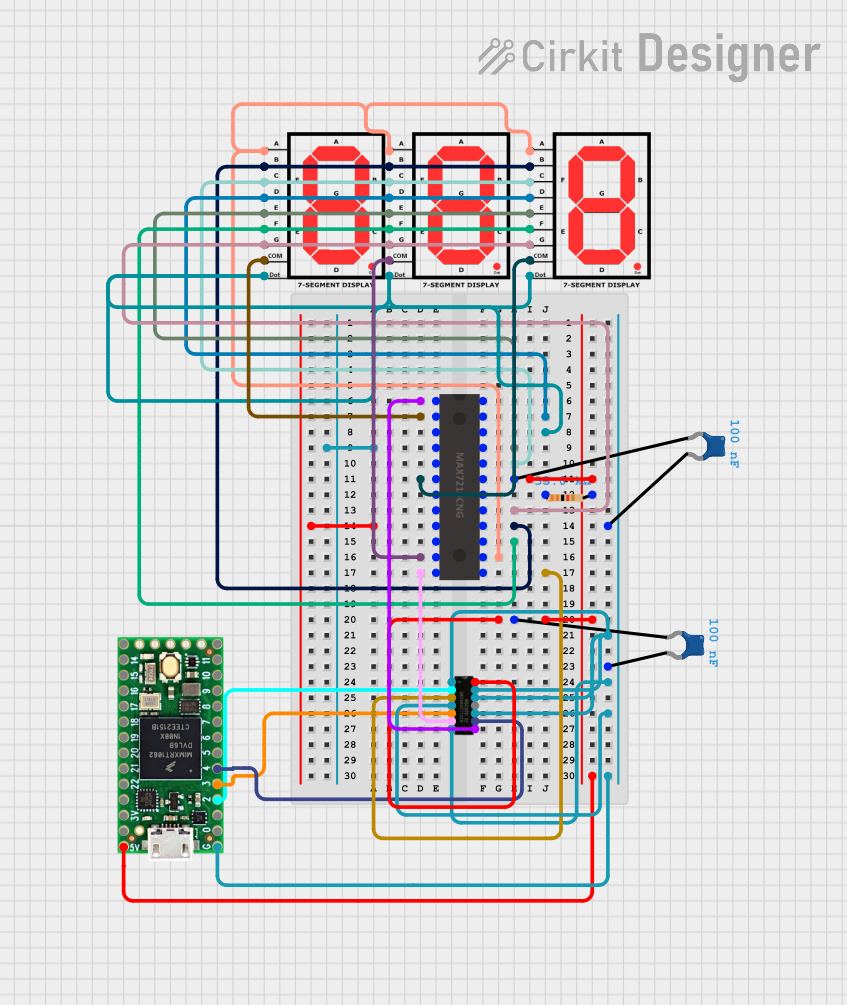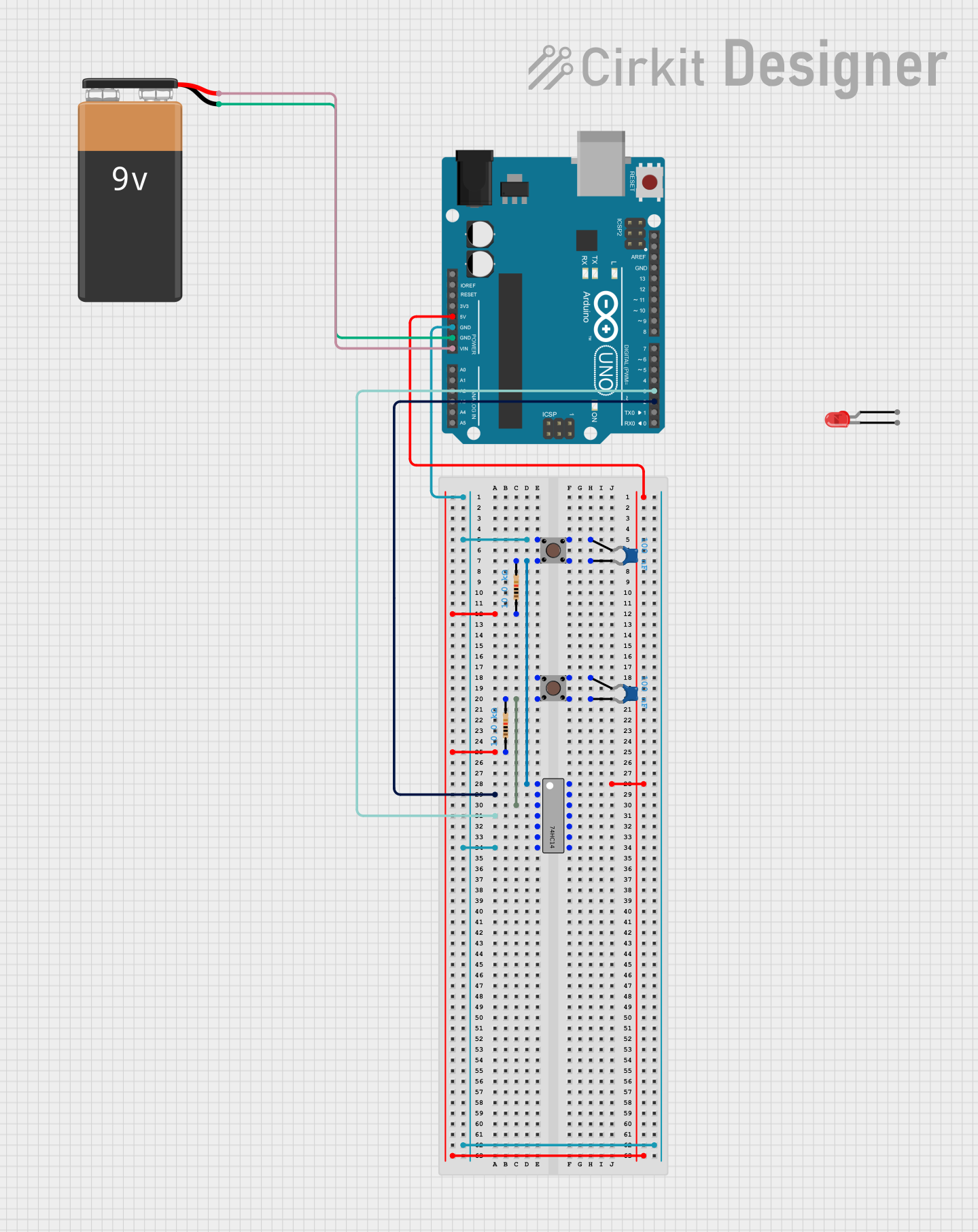
How to Use SN74AHC14: Examples, Pinouts, and Specs

 Design with SN74AHC14 in Cirkit Designer
Design with SN74AHC14 in Cirkit DesignerIntroduction
The SN74AHC14 device from Texas Instruments (TI) is a hex inverter with Schmitt-trigger inputs. This integrated circuit (IC) is designed to provide inverting functions with enhanced signal conditioning via the Schmitt-trigger action. The SN74AHC14 is commonly used in applications that require noise filtering, signal conditioning, square wave generation, and in circuits where slow input transitions are present.
Explore Projects Built with SN74AHC14

 Open Project in Cirkit Designer
Open Project in Cirkit Designer
 Open Project in Cirkit Designer
Open Project in Cirkit Designer
 Open Project in Cirkit Designer
Open Project in Cirkit Designer
 Open Project in Cirkit Designer
Open Project in Cirkit DesignerExplore Projects Built with SN74AHC14

 Open Project in Cirkit Designer
Open Project in Cirkit Designer
 Open Project in Cirkit Designer
Open Project in Cirkit Designer
 Open Project in Cirkit Designer
Open Project in Cirkit Designer
 Open Project in Cirkit Designer
Open Project in Cirkit DesignerCommon Applications and Use Cases
- Signal conditioning to remove noise
- Generating precise square waves from irregular signals
- Debouncing switches and relays
- Oscillator circuits
- Logic level conversion
Technical Specifications
Key Technical Details
- Supply Voltage (Vcc): 2 V to 5.5 V
- High-Level Output Current (IOH): -8 mA
- Low-Level Output Current (IOL): 8 mA
- Propagation Delay (tpd): 8 ns (typical at Vcc = 5 V)
- Operating Temperature Range: -40°C to 85°C
Pin Configuration and Descriptions
| Pin Number | Name | Description |
|---|---|---|
| 1 | 1A | Input of inverter 1 |
| 2 | 1Y | Output of inverter 1 |
| 3 | 2A | Input of inverter 2 |
| 4 | 2Y | Output of inverter 2 |
| 5 | 3A | Input of inverter 3 |
| 6 | 3Y | Output of inverter 3 |
| 7 | GND | Ground (0 V) |
| 8 | 4Y | Output of inverter 4 |
| 9 | 4A | Input of inverter 4 |
| 10 | 5Y | Output of inverter 5 |
| 11 | 5A | Input of inverter 5 |
| 12 | 6Y | Output of inverter 6 |
| 13 | 6A | Input of inverter 6 |
| 14 | Vcc | Positive supply voltage |
Usage Instructions
How to Use the Component in a Circuit
Power Supply Connection: Connect pin 14 (Vcc) to the positive supply voltage within the range of 2 V to 5.5 V. Connect pin 7 (GND) to the ground of the circuit.
Input Connection: Apply the input signal to the respective input pin (1A, 2A, 3A, 4A, 5A, or 6A) that you wish to invert.
Output Connection: The inverted output can be taken from the corresponding output pin (1Y, 2Y, 3Y, 4Y, 5Y, or 6Y).
Decoupling Capacitor: It is recommended to use a 0.1 µF decoupling capacitor between Vcc and GND near the IC to filter out noise.
Important Considerations and Best Practices
- Ensure that the supply voltage does not exceed the maximum rating of 5.5 V to prevent damage to the IC.
- Unused inputs should be tied to Vcc or GND to avoid unpredictable behavior.
- Avoid applying signals to the inputs before the supply voltage is established.
- Keep the input transition times as short as possible to minimize power consumption.
Troubleshooting and FAQs
Common Issues Users Might Face
- Output Not Inverting: Ensure that the input signal is within the threshold levels for the Schmitt-trigger action to occur.
- IC Heating Up: Check if the supply voltage is within the specified range and that the output is not short-circuited.
Solutions and Tips for Troubleshooting
- If the output is not as expected, verify the input signal levels and the supply voltage.
- Ensure that the IC is not being overloaded by checking the output current does not exceed the specified limits.
- Use an oscilloscope to check for proper input and output waveforms.
FAQs
Q: Can the SN74AHC14 be used with a 3.3 V logic level? A: Yes, the SN74AHC14 can operate at 3.3 V, making it compatible with 3.3 V logic levels.
Q: What is the purpose of Schmitt-trigger inputs? A: Schmitt-trigger inputs provide hysteresis, which helps in filtering out noise and stabilizing slow or noisy input signals.
Q: How many inverters are in the SN74AHC14? A: There are six independent inverters in the SN74AHC14 IC.
Q: Can I use the SN74AHC14 for debouncing mechanical switches? A: Yes, the SN74AHC14 is suitable for debouncing mechanical switches due to its Schmitt-trigger inputs.
Example Code for Arduino UNO
// Example code to debounce a switch using SN74AHC14 and Arduino UNO
const int switchPin = 2; // Connect the output of the inverter to digital pin 2
const int ledPin = 13; // Onboard LED connected to digital pin 13
void setup() {
pinMode(ledPin, OUTPUT);
pinMode(switchPin, INPUT);
}
void loop() {
int switchState = digitalRead(switchPin);
if (switchState == HIGH) {
digitalWrite(ledPin, HIGH); // Turn on the LED if the inverter output is HIGH
} else {
digitalWrite(ledPin, LOW); // Turn off the LED if the inverter output is LOW
}
}
Remember to connect the input of the SN74AHC14 to a debounced switch and the output to the switchPin on the Arduino. The above code assumes that the switch is normally open and connected to ground through the inverter. When the switch is pressed, the inverter output goes HIGH, and the LED turns on.